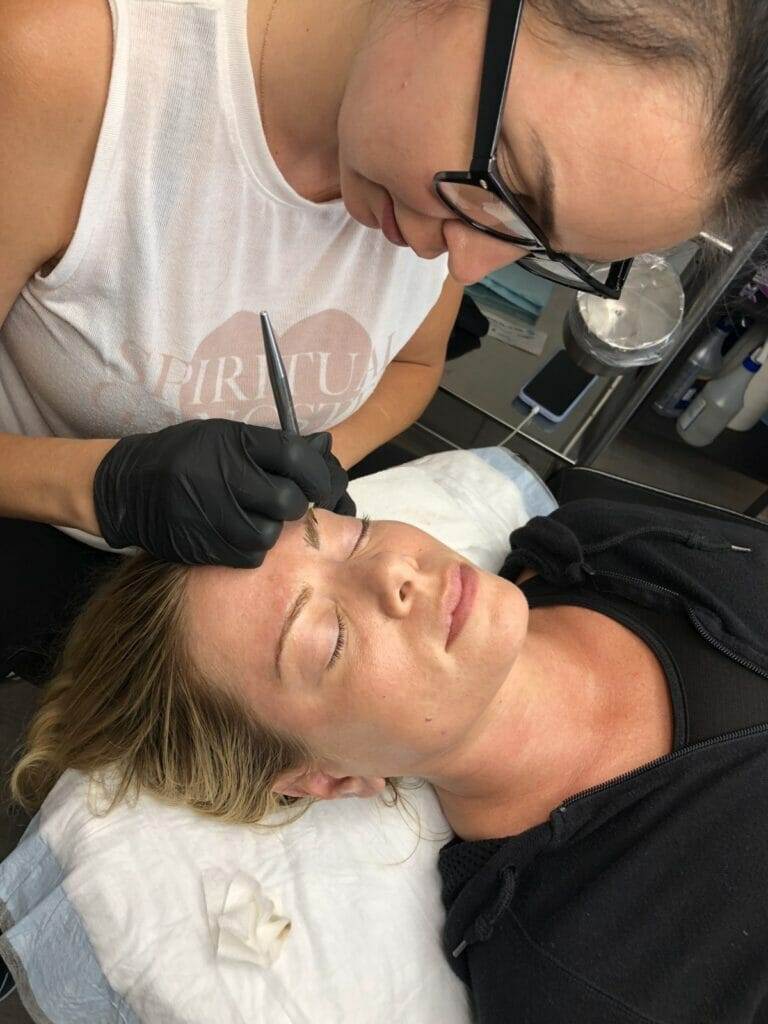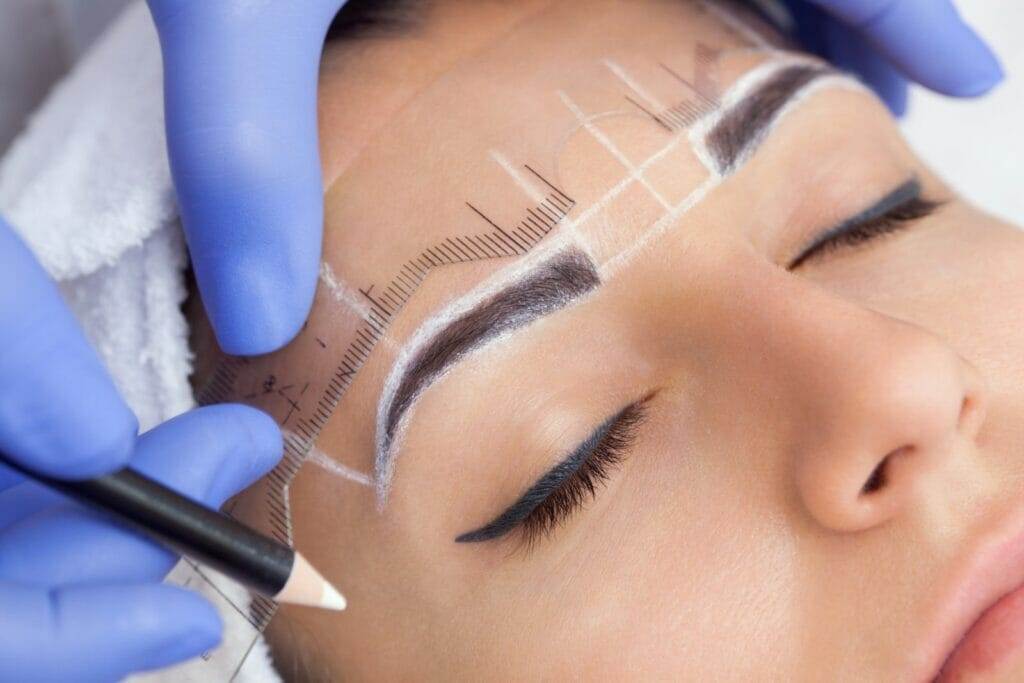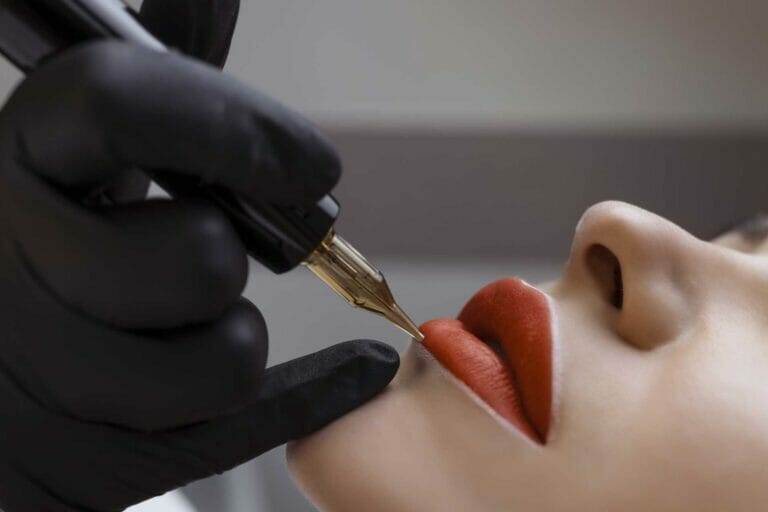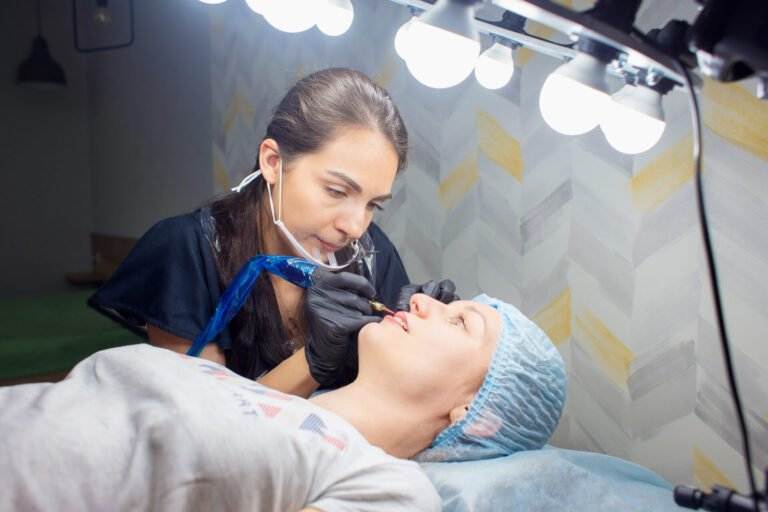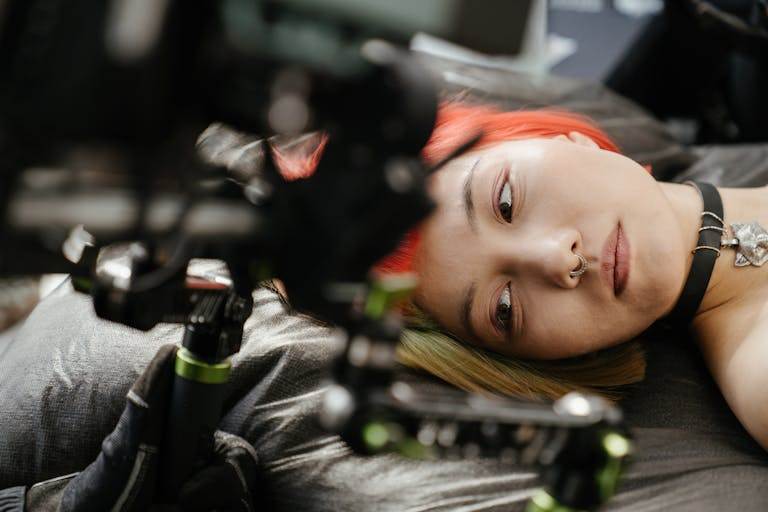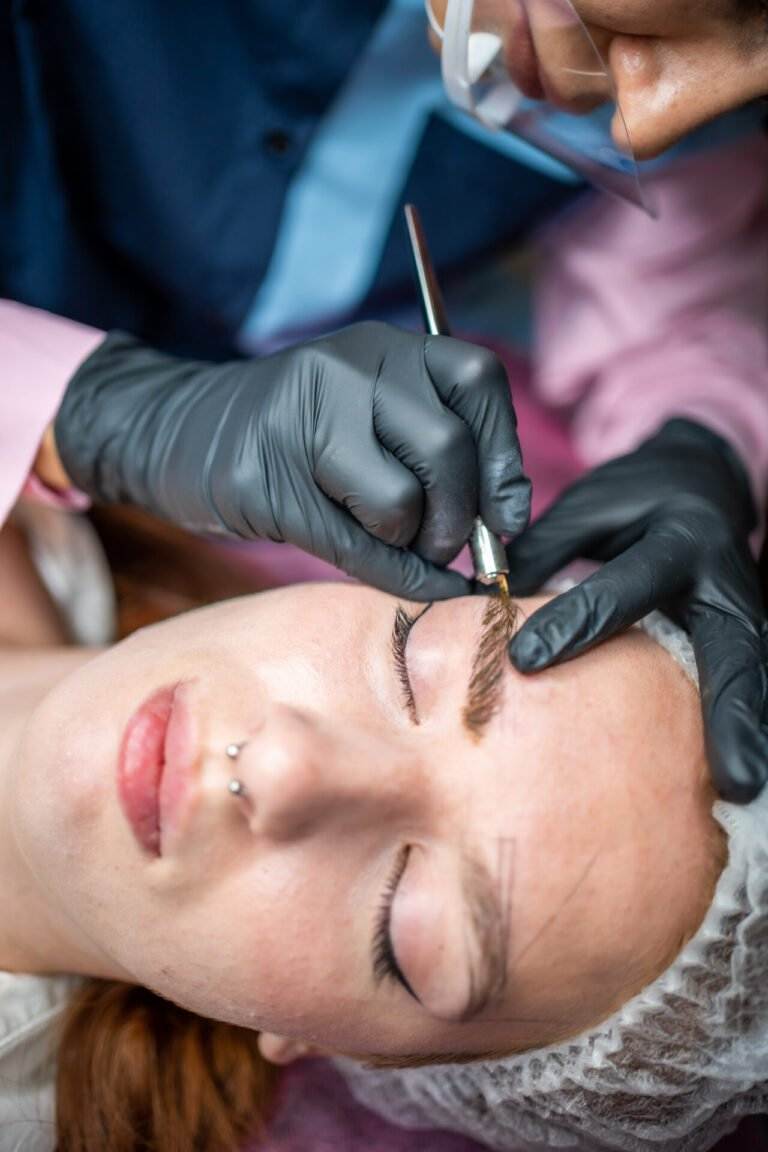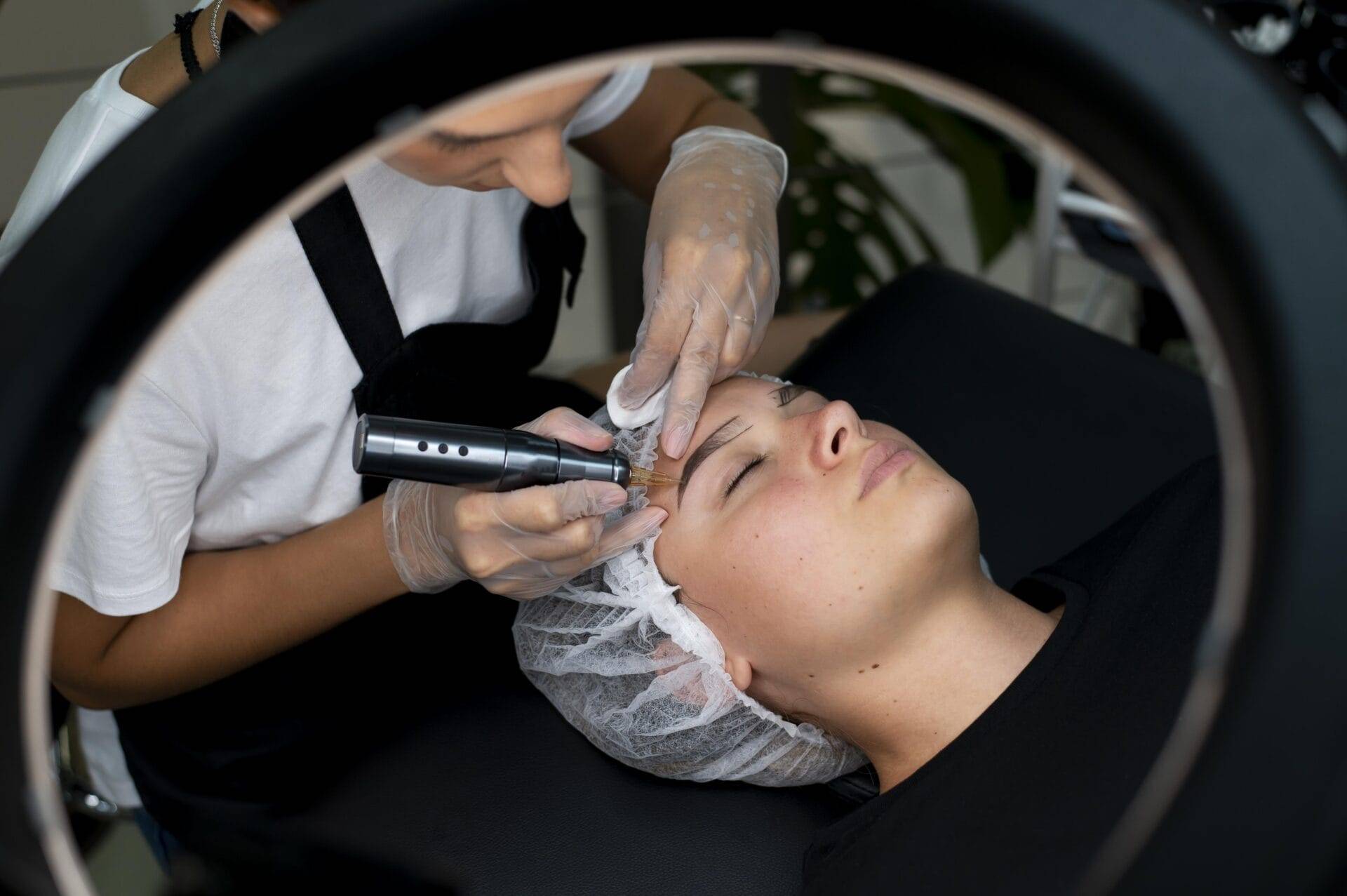Microblading has become increasingly popular in recent years as a way to achieve perfectly shaped and full brows. This semi-permanent makeup technique involves using a small handheld tool to create hair-like strokes on the brow area, giving the appearance of natural, fuller brows. In this article, we will explore the basics of microblading, how it can transform your brows, the benefits of microblading compared to traditional brow techniques, the microblading process, finding the right microblading artist, preparing for your appointment, aftercare tips, how long microblading lasts, touch-ups and maintenance, microblading for different brow shapes and styles, and how microblading can be the ultimate solution for sparse or thin brows.
The Basics of Microblading: What You Need to Know
Microblading is a semi-permanent makeup technique that involves using a small handheld tool with tiny needles to create hair-like strokes on the brow area. The pigment is deposited into the upper layers of the skin, creating natural-looking brows that can last anywhere from one to three years. The tools used in microblading include a microblade (a small handheld tool with tiny needles), pigments (colorants used to create the desired brow color), and numbing cream (to minimize any discomfort during the procedure).
Microblading differs from other brow techniques such as threading, waxing, and tinting in that it creates individual hair-like strokes that mimic the natural growth pattern of eyebrows. This technique allows for a more precise and realistic result compared to other methods. Additionally, microblading is a semi-permanent solution that lasts longer than other techniques, making it a popular choice for those looking for long-lasting results.
How Microblading Can Transform Your Brows
Microblading has the ability to transform sparse or thin brows into full and perfectly shaped eyebrows. Before and after photos of microbladed brows show a significant improvement in the shape and fullness of the brows. The hair-like strokes created during the microblading process can fill in gaps and create a more defined arch, giving the brows a more polished and symmetrical appearance.
One of the key benefits of microblading is that it provides natural-looking results. The individual hair-like strokes created during the procedure blend seamlessly with the existing brow hairs, creating a realistic and natural appearance. This is especially beneficial for those with sparse or thin brows, as it can give the illusion of fuller and more defined eyebrows.
The Benefits of Microblading vs. Traditional Brow Techniques
When comparing microblading to traditional brow techniques such as threading, waxing, and tinting, there are several benefits to consider. Firstly, microblading offers longer-lasting results compared to other techniques. While threading, waxing, and tinting typically last for a few weeks, microblading can last anywhere from one to three years with proper care and maintenance.
Another benefit of microblading is the precision and customization it offers. Unlike other techniques that rely on removing or tinting existing brow hairs, microblading allows for the creation of individual hair-like strokes that mimic the natural growth pattern of eyebrows. This allows for a more precise and tailored result that can be customized to suit each individual’s unique brow shape and style.
The Microblading Process: What to Expect

The microblading process typically begins with a consultation with a qualified and experienced microblading artist. During this consultation, the artist will assess your natural brow shape, discuss your desired outcome, and answer any questions or concerns you may have. It is important to choose a reputable artist who has a portfolio of before and after photos showcasing their work.
On the day of the procedure, the artist will begin by numbing the brow area with a topical numbing cream to minimize any discomfort. They will then use a small handheld tool with tiny needles to create hair-like strokes on the brow area, depositing pigment into the upper layers of the skin. The process can take anywhere from one to two hours, depending on the desired outcome and the individual’s pain tolerance.
How to Prepare for Your Microblading Appointment
Before your microblading appointment, there are a few things you can do to prepare. It is important to follow any pre-procedure instructions provided by your microblading artist, such as avoiding certain medications and alcohol that can thin the blood and increase the risk of bleeding during the procedure.
Properly caring for your skin before the procedure is also important. Avoid using any harsh exfoliants or retinol products on your brow area in the days leading up to your appointment, as this can cause irritation and affect the healing process. It is also recommended to avoid excessive sun exposure or tanning beds, as this can affect the color retention of the pigment.
Aftercare Tips for Your Microbladed Brows
After your microblading procedure, it is important to follow the post-procedure instructions provided by your microblading artist to ensure proper healing and long-lasting results. These instructions may include avoiding water and sweating for a few days, avoiding picking or scratching the treated area, and avoiding any products that contain alcohol or exfoliants.
Properly cleaning and moisturizing your brows during the healing process is also crucial. Your microblading artist will provide you with a recommended aftercare routine, which may include gently cleansing the brow area with a mild cleanser and applying a thin layer of ointment or moisturizer to keep the area hydrated.
During the healing process, it is important to avoid certain activities that can affect the healing and color retention of the pigment. This may include avoiding excessive sun exposure, swimming in chlorinated pools or saltwater, and using saunas or steam rooms. It is also important to avoid picking or scratching the treated area, as this can cause scarring and affect the final result.
How Long Does Microblading Last?
The lifespan of microbladed brows can vary depending on several factors, including the individual’s skin type, lifestyle, and aftercare routine. On average, microbladed brows can last anywhere from one to three years with proper care and maintenance.
Factors that can affect the longevity of microblading include excessive sun exposure, swimming in chlorinated pools or saltwater, using harsh exfoliants or retinol products on the brow area, and picking or scratching the treated area during the healing process. It is important to follow the aftercare instructions provided by your microblading artist to ensure long-lasting results.
Touch-Ups and Maintenance for Your Microbladed Brows
While microbladed brows can last anywhere from one to three years, touch-up appointments are typically recommended to maintain the desired shape and color of the brows. The frequency of touch-up appointments can vary depending on several factors, including the individual’s skin type, lifestyle, and aftercare routine.
It is important to schedule touch-up appointments as recommended by your microblading artist to ensure the longevity of your microbladed brows. During these touch-up appointments, the artist will assess the condition of your brows and make any necessary adjustments or enhancements to maintain the desired shape and color.
Proper maintenance of your microbladed brows is also important to ensure long-lasting results. This may include avoiding excessive sun exposure, using sunscreen on the brow area, and avoiding harsh exfoliants or retinol products that can fade the pigment. It is also important to protect your brows from excessive sweating and friction, as this can affect the color retention of the pigment.
Microblading for Different Brow Shapes and Styles
Microblading can be customized to suit different brow shapes and styles. Whether you prefer a natural and subtle look or a more defined and bold brow, a skilled microblading artist can create the desired shape and style that complements your facial features.
Examples of different brow shapes and styles include arched brows, straight brows, rounded brows, and angled brows. During a consultation with a microblading artist, they will assess your natural brow shape and discuss your desired outcome to determine the best shape and style for your face.
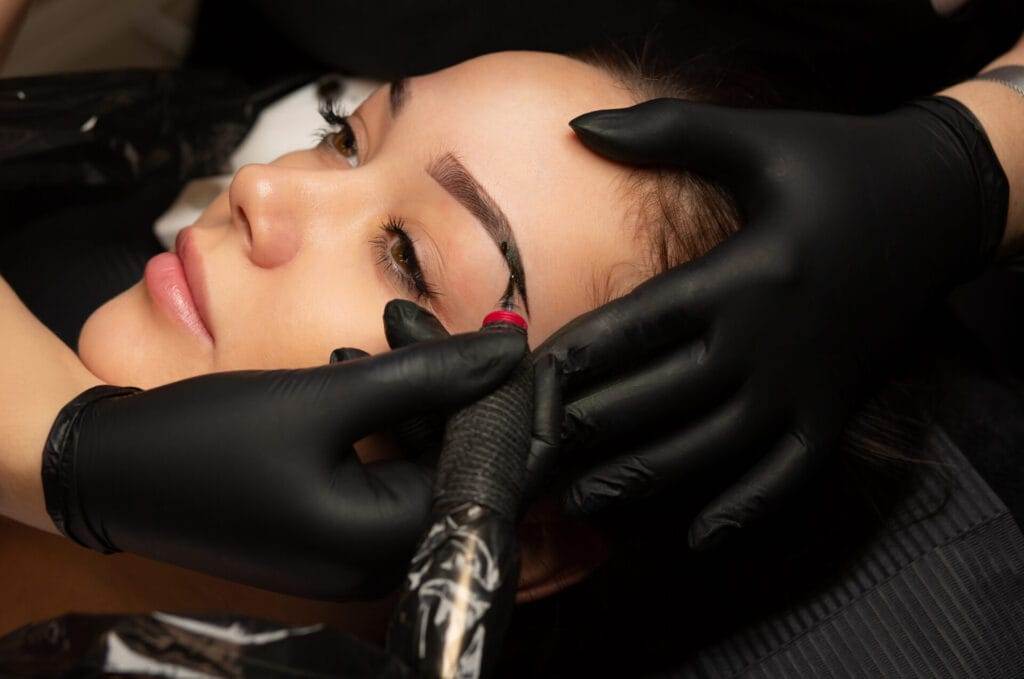
Microblading: The Ultimate Solution for Sparse or Thin Brows
Microblading is often considered the ultimate solution for those with sparse or thin brows. The individual hair-like strokes created during the microblading process can fill in gaps and create the illusion of fuller and more defined eyebrows.
For those with sparse or thin brows, microblading can be life-changing. It can boost confidence and self-esteem by providing natural-looking brows that require minimal daily maintenance. With microbladed brows, there is no need to spend time filling in sparse areas with brow pencils or powders, as the hair-like strokes created during the procedure create a natural and polished look.
Microblading is a popular and effective technique for achieving perfectly shaped and full brows. It offers natural-looking results that can last anywhere from one to three years with proper care and maintenance. By finding the right microblading artist, following the pre and post-procedure instructions, and scheduling touch-up appointments as recommended, you can enjoy long-lasting and beautifully enhanced brows. Consider microblading as a solution for enhancing your brows and boosting your confidence.


